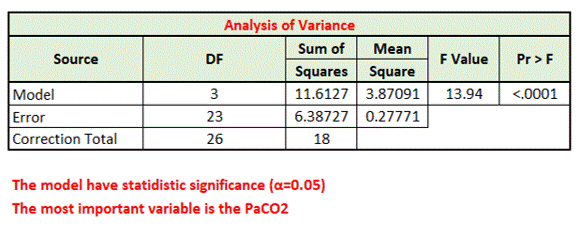Session Information
Date: Sunday, October 7, 2018
Session Title: Tremor
Session Time: 1:45pm-3:15pm
Location: Hall 3FG
Objective: To determine the relationship between the etiological variables of the exacerbated physiological tremor in the emergency, hospitalization and intensive care services in a general hospital in Mexico.
Background: Movements disorders in the ambulatory patient are the most frequent clinical scenario in the Mexican population since there are less than 30 movement disorders specialists for 124 million Mexicans. However; the clinical characteristics, etiology and diagnostic approach of movements disorders in Mexican hospitals are unknown, with gait disorder being the most frequent movement disorder and the use of drugs as the most common causal etiology in international series. The recognition, therapeutic approach and treatment are limited by the lack of resources, neurologists and specialists in movements disorders.
Methods: A prospective study from Nov. 2017 to Feb. 2018, patients with diagnosis of movement disorder or its development were selected with emphasis on the exacerbated physiological tremor observed during their stay in the ER, Internal Medicine, Surgery and ICU services. Specific tests were carried out by residents of internal medicine and by the neurology service. Evaluation was made during the time of hospitalization and the patient’s discharge. No complementary studies were carried out to support the clinical diagnoses. The patients with previously established diagnosis were only reclassified with the criteria of abnormal movement.
Results: The sample size was n= 31, 61% men and 38% women. Neurological patients were 8 (25%). The rest of etiologies were miscellaneous: dementia, PD, multi-infarct disease, bacterial meningitis. Mean age was 62.9 years (19-93 years). Frequency movement desorders was: exacerbated physiological tremor, myoclonus, essential tremor, oromandibular dyskinesia, parkinsonism and PD. The number of non-neurological patients was 23 (74.1%), with diagnosis of malnutrition, diabetes mellitus and other diseases.
Conclusions: After all the analized data we conclude that the main cause of exacerbated physiological tremor is related with metabolic disorders; Mainly explaned by glucose and PaC02 (p-value <0.05), the data also may suggest that exacerbated physiological tremor has also distinct behaviour between men and women (Fisher's exact test P-value <0.05) but has to be confirmated using a larger sample size, variables related with the disease were also distinct by gender (Kendall's Tau B).
References: Han Yoon J, Hyu Lee P, et al. Movement disorders at a university hospital emergency room An analysis of clinical pattern and etiology. J Neurol (2008) 255:745–749. Schaefer SM, Rezvan Rostami, et al. Movement Disorders in the Intensive Care Unit. Semin Neurol 2016;36:607–614.
To cite this abstract in AMA style:
D. Rebolledo, O. Gonzalez, J. Rebolledo, Z. Rebolledo. Systemic variables that exacerbated physiological tremor in a general hospital in Mexico [abstract]. Mov Disord. 2018; 33 (suppl 2). https://www.mdsabstracts.org/abstract/systemic-variables-that-exacerbated-physiological-tremor-in-a-general-hospital-in-mexico/. Accessed December 18, 2025.« Back to 2018 International Congress
MDS Abstracts - https://www.mdsabstracts.org/abstract/systemic-variables-that-exacerbated-physiological-tremor-in-a-general-hospital-in-mexico/






